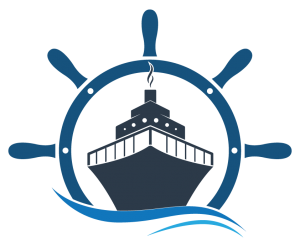For crew and passengers alike, everyone on a cruise ship wants to use the internet more and more now. But most are aware cruise ship internet is very slow compared to land. So, exactly how fast is it?
Cruise ship internet connections can be as painfully slow as 1 to 2 Mbps (megabytes per second) and as fast as 20 Mbps. Compare this to land, in which most people experience speeds of 100 to 300 Mbps or more. The internet speed depends on many factors like:
- The technology of the ship, being satellite-based or using towers
- The location of the ship
- How many people are using it
- Obstructions
- Your devices
- Limits put in place by the cruise ship – potentially scandalous!
As the IT Officer on many cruise ships, I saw first hand how these things made a big difference to the internet speed, so I’ve explained each of them below.
1. The Technology of the Ship
How does cruise ship internet satellite technology work?
Most cruise ships use satellite technology to provide internet access to the ship. And it’s slow.
Satellite technology requires signals to be sent 22,000 to 26,000 miles from the ship into satellite orbit, the same distance back down to a land station, the land station to the data center where the information is, back to the land station, up to the satellite again, and then finally back to the ship.
Yep. That takes time.

This happens every time you surf a website, send a text, an email, watch a video, and more.
And technically, it’s not just one “request” either. For example, you’d think your simple email would send all at once, but that’s not the case.
What actually happens is your email is broken up into hundreds of tiny “packets”, with each packet being sent individually. And with each, a confirmation from the other side that it was received.
Once they’ve all been received and confirmed, the packets are reassembled on the receiving end and the email is ready for humans to read it.
That’s a lot of back and forth, and at great distances, and one of the reasons the internet can feel so slow at sea.
Once, while working on cruise ships…
The internet was incredibly slow one day, so the Captain asked me to check into it.
I used our satellite phone to call the company that provided our internet connection and explained the situation.
The technician said it was because of a bad snowstorm in New Jersey.
Yep! Because the land station receiving the signal from the satellite was located in New Jersey, the storm was causing interference with the signal.
Once the storm passed, the internet speed jumped right back to normal.
Crazy!
More satellites make cruise ship internet faster
Cruise lines know people have a low tolerance for slow internet and are doing a few things to make this experience better.
One of these solutions is to work with internet provider companies that add more satellites.
More satellites mean more signals can be sent and received – like adding more lanes to a congested highway.
More satellites also mean better coverage around the world.
As the IT Officer, I would often have to switch satellites depending on where in the world we were heading.
The area a satellite covers is known as its “footprint”, and you’ll have a good connection if you’re well within the footprint. The closer you get to the edge of that footprint, the worse your connection.
As we approached the edges of those footprints, it was my job to work with our internet provider to switch to the next satellite.

Personally, I found it a lot of fun to do this, and hey, who doesn’t like to play with multi-million dollar satellite equipment 🙂
An increase in bandwidth also increases internet speed
This one’s a bit boring to most, but “bandwidth” is like the width of a river. The wider the river, the more water can go down it at once.
When the bandwidth of information sent and received by a satellite is increased, more can be passed through at one time – maker the internet faster.
With newer satellites, most can handle larger bandwidths.
Satellite technology is still at the mercy of that “22,000 miles there and back again” limitation though, so some companies that provide internet to cruise ships have started using land towers.
How do land towers increase the speed of cruise ship internet?
Land towers are placed along the route of the cruise ship, and the ship switches from satellite over to these towers when in range.
Using 3G and 4G technology, data is passed like regular mobile phone connections and is therefore much faster.
These towers are often only a few miles away too, making them much closer than the immense 22,000 mile distance as experienced with satellites.
With less distance to travel, the internet signal is a lot faster, and more comparable to land.

2. The Location of the Ship
Currently, one of the best places in the world for a better internet speed is the Carribean.
With so many cruise ships in that area, a lot of newer satellites have been employed to service the demand, as well as land towers.
More satellites and towers mean more opportunities for increased connections and a faster internet experience.
For ships farther out to sea or in locations with fewer satellites or towers, the opposite is true as more connections are trying to share the same limited resources.
So you’ll notice internet speeds changing depending on where you are in the world.
3. The Number of People Using It
The more people using the internet on board, the slower the connection.
Every ship has a computer network that manages the wifi, and the more people using it, the harder that network is working to process all those requests.
Older ships may also be using out-dated network and server technology, which was never designed to deal with current-day demands.
Even 10 years ago, only a few people had tablets and phones. Now everyone has a least once device, including the kids. That’s a lot of devices and connections!
But, there are still many times when fewer people are using the internet, and as the Internet Manager and IT Officer, I was able to figure out the best times to use the internet at sea, which you can read here.
4. Obstructions
There are many obstructions on cruise ships that slow the internet down, the first being the cruise ship itself.
Cruise ships are made of materials that obstruct wifi
Cruise ships are made of steel and other materials that greatly inhibit the wifi signal.
Instead of these wifi signals passing through walls and structures easily, they bounce around causing havoc to the devices trying to connect.
I found early iPhones and iPads had a huge problem connecting to the wifi as they were always disconnecting and logging people out. The wifi signal on ships is always fluctuating causing these devices to drop one connection in search of a better one. So frustrating!
To help with these issues, more internet boosters and repeaters were placed along the corridors of the ship, servicing 4 to 6 rooms at once instead of 10 to 12 rooms previously.

Next time you’re on board, look for those little dome-shaped structures on the corridor ceiling and if your room is close to one, you’ll have a better internet connection.
These boosters are also sometimes found inside rooms and cabins, and in the public areas.
Once, while working on cruise ships…
A few of the crew were complaining the internet was extra bad.
I noticed they were all living in the same area, so I suspected one of the boosters near them might have an issue.
When entering the Broadcast Manager’s cabin, I notice he had disconnected the booster on the wall next to his bed.
“I didn’t want that wifi signal going through my head all night long,” he said, and to be honest I didn’t blame him.
I relocated the booster, and all was good again.
The ship’s mast can obstruct the internet signal
As odd as it sounds, even the external structures of the ship can slow or stop that internet connection – like the ship’s mast.
The mast is that tall structure at the top front of the ship where radar and antennas are located, as high on the ship as possible.
The ship’s satellite dishes are located on the top of the ship too, usually near the back, in those golf ball-like structures used to protect them from the elements.
The dishes have to point directly at the satellite, known as “line-of-site”, and anything in their way will obstruct and inhibit the signal.
Every once in a while, the ship will be headed in the same direction as where the dish is pointing at the satellite, and when this happens the ship’s mast can get in the way.
You’ll find this most often when the ship is near the edge of the satellite footprint, positioning the satellite lower on the horizon. Tall obstacles like masts can then easily get in the way.

The result is a disconnect between the dish and the satellite, with no more internet until the ship changes course.
Once, while working on cruise ships…
I suddenly got a load of calls from all over the ships asking why the internet was down.
Upon quick investigation, I noticed the ship’s mast was directly in the way of the dish and satellite.
As my office was right on the bridge, I approached the Captain and explained the situation to him.
We were far out to sea, so he simply had the Navigator plot a new course that changed the ship’s direction slightly, and the internet was back!
Not all Captains were as accommodating, but this Captain was really easy to work with. For some crazy cruise ship Captain stories, look out for the upcoming post, “What are Cruise Ships Captains like?”
Other ships can obstruct the internet signal
Yes! Even other ships can get in the way too.
You’ll find this mostly when docked in port though.
So many times in port I’d get the call saying the internet is down, only to find the ship next to us was so big it blocked our line-of-sight to the satellite.

And there’s nothing I could do about it.
Once we sailed away, the internet would come back, and all would be good.
5. Your Devices Slow your Internet Down
Part of the reason the internet is so slow on cruise ships is because of the device being used.
Whether a computer, tablet or phone, these devices are constantly sending data and doing updates in the background all the time, even when you’re not intentionally on your device.
Some updates can be 30 to 300 MB or more in size, cribbling your internet experience, and potentially costing you a lot of money.
For a full list on what to do about it, you can read my other post about 9 tips for faster internet when working on cruise ships, or as a passenger.
6. Limits in Place by the Cruise Ship
Let’s face it, the internet is a source of revenue for cruise ships, and the slower it is, technically the more money the cruise ship makes.
And as most packages are pay-per-minute, it’s sadly in the ship’s best interest to have a slow connection.
There’s little motivation to improve technology to speed up the connection, as it would make them less money.
Making it hard to know how much internet time you’ve used
Another thing I thought was a bit shady was how difficult it was to know the amount of internet time you had left.
On one contract I noticed the Internet Cafe computers had a bar along the top of the internet browser showing you were logged in, and with a timer counting down your minutes.
After an update to the system, that timer was suddenly gone.
I put in a support request, and they responded saying the timer was no longer a feature of the system.
Why not? Because when the time ran out, passengers would automatically be switched over to “pay-as-you-go”, which makes the ship more money.
Not having a timer would make it harder for passengers to know when their minutes were running out.
Not cool – but there wasn’t much I could do about it.
Slower internet for crew and passengers
As the IT Officer, I knew there were different networks on the ship providing internet – one for recreational crew use, another for the passengers, and a third for the admin staff of the ship.
I noticed over time the internet speeds were different on each network, and not surprisingly the “pay for use” networks for the crew and passengers were the slowest.
This led me to realize the pay-per-use networks had a cap on them, on purpose. Argh!
The internet provider wasn’t always able to provide the speeds they promised
Not a day would go by without internet speed complaints, so I inquired with the home office as to what internet speeds should be for crew and passengers. I then compared them to the speeds we were getting.
I wished I had saved all those months of spreadsheet data, but the consistent result was that the speeds we were getting were much lower than the actual speeds.
My conclusion: The internet provider wasn’t able to consistently provide the speeds they contractually promised to the cruise line.
In my support inquiries to the provider, they said we sometimes got more speed than we should, and sometimes less. They claimed they were constantly balancing the needs of many different ships at once, and hence the inconsistency.
But why promise speeds if you can’t deliver?
I brought my conclusions to the home office, but unfortunately no action was taken that I was aware of. Again, it’s not in their best interest to have faster internet, so my assumption was that it wasn’t a big priority.
I also didn’t want to “rock the boat” too much, as it could affect my job.
The Tides are Definitely Changing… Faster Internet is one the Way
As crew and passengers demand to be online most of the time now with social media and streaming services like Netflix, Amazon Prime and Disney+, slow internet is no longer acceptable.
The smart cruise lines have figured this out, and have realized faster internet can make them more money by getting passengers to come over from the slower ships.
More cruise lines are using internet providers (like SES) that have more satellites and with up-to-date technology.
SES added 4 new satellites in May of 2018 to their existing 12, for clients such as Carnival Corporation and Royal Caribbean Cruises.
Ships are also starting to spend millions to upgrade their internal networks and other technology to keep up with the demand.
It’s about time.
I still think the prices of internet packages onboard are ridiculous, but at least people are getting more value for their money through faster internet speeds and better connections.
If this was helpful, don’t forget to check out a few of the things you can do to improve your internet speed and experience when working on cruise ships or taking a vacation.






